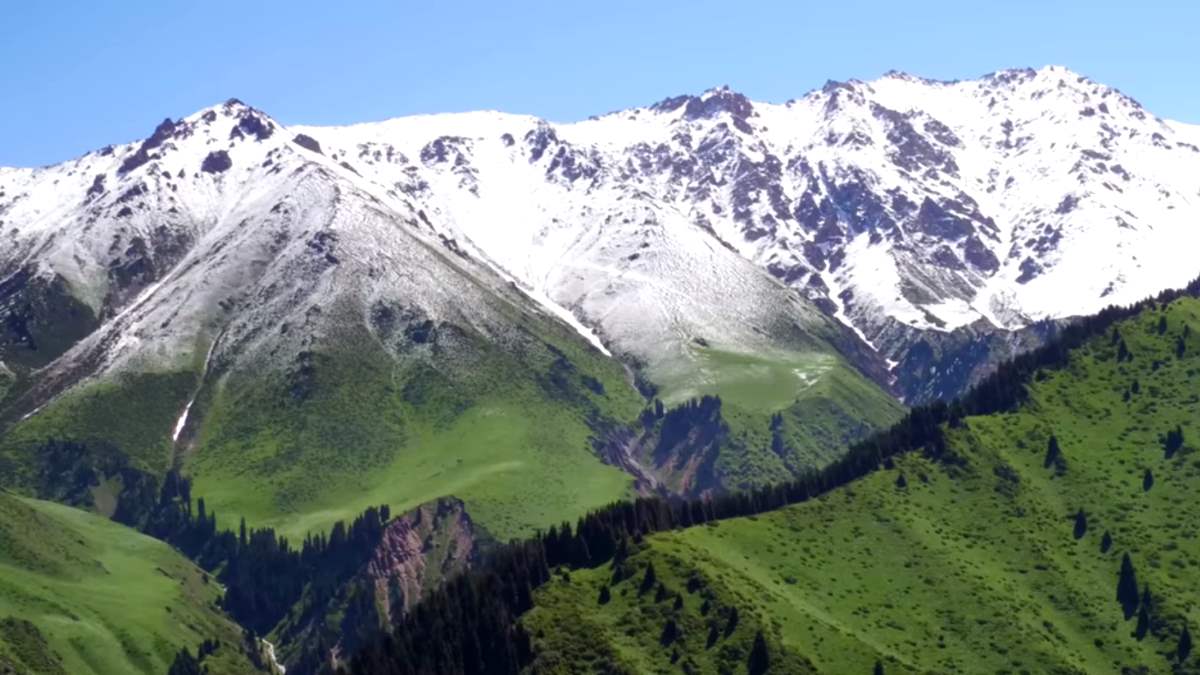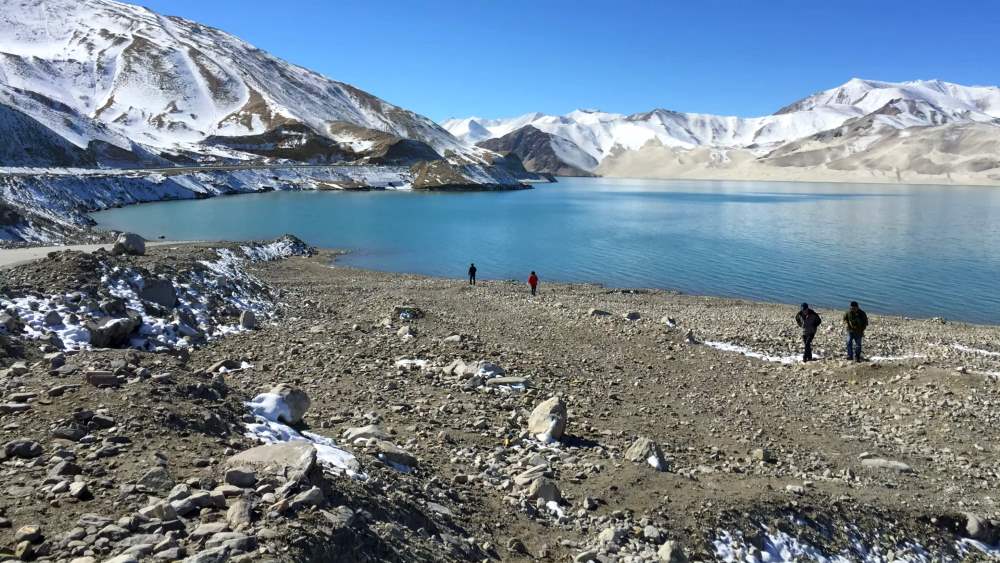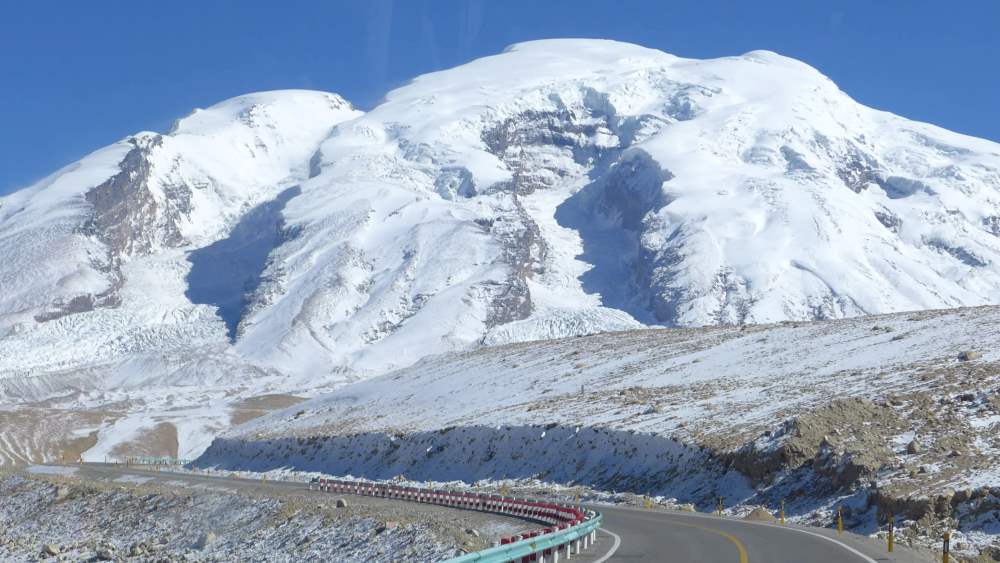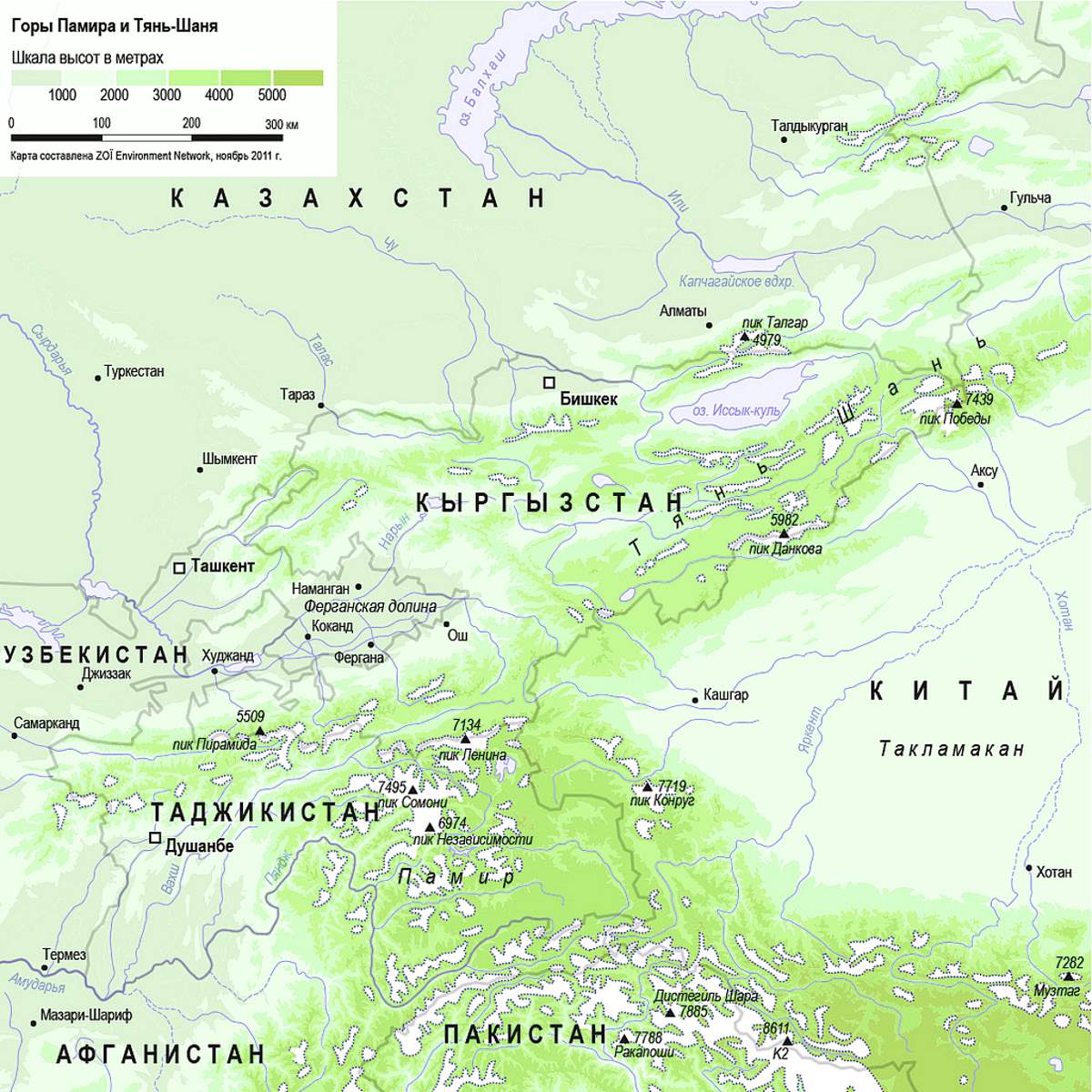Памир – это гигантская горная система, расположенная в южной части Центральной Азии и на севере от Гималаев. Памир занимает несколько стран: Таджикистан, Китай, Афганистан и Пакистан.
Народы Центральной Азии называют Памир «крышей мира» и «подножием Митры», в 18—20 в.в. именно этот регион стал ареной столкновения Великобритании и Российской Империи.
«Семитысячники» Памира
Самая высокая гора этой гигантской горной страны расположена в Восточном Памире на землях современного Китая. Она называется Конгур, и ее высота составляет 7 649 метров.

Здесь расположено и много иных «семитысячников». Например, бывший пик Коммунизма, самая высокая гора в бывшем Советском Союзе (сегодня – в Таджикистане), его высота – 7 495 метров.
Климат Памира
Вершины гор Памира всегда покрыты снегами. Зима здесь очень холодная, а лето – недолгое и прохладное, т.е. климат – континентальный. В Центральном и Восточном Памире колебания температур большие, а к востоку только увеличиваются.
Средняя температура на Памире может колебаться зимой за день от -20C до +5-+7C. Эта горная страна расположена в субтропиках, но летом, судя по влажным воздушным массам, это настоящие тропики. Зимой минимальная температура может быть до -50C.

Средняя температура летом – около +14C, максимальная — +20C. Теплое время года начинается в мае и заканчивается в октябре. Эта статистика очень обобщенная, т.к. температура воздуха зависит от высоты, на которой она измеряется.
Значительно холоднее на Восточном Памире. В некоторых его регионах морозы стоят круглый год. А Западный Памир отличается довольно теплым климатом. Там в январе среднемесячная температура положительная, выпадает больше осадков.
Известные ледники Памира
- Ледник Федченко. Это настоящий природный феномен длиной около 77 км. Он самый большой в мире, если исключить ледники Северного и Южного полюса. Ледник расположен в Центральной Азии в Таджикистане.
- Ледник Медвежий. Он также находится в Таджикистане и лежит в долине реки Хирсдары. Вдоль всего тела ледника расположены шлейфы непрерывно осыпающихся горных пород. Подвижки (сёрджи) Медвежьего происходили множество раз в течение 20 века.
Геология гор Памира
Памир имеет сложное геологическое строение. В его составе известняки и пески, гранит, горный хрусталь и самоцветы. По своей геологии эта горная страна разделена на несколько районов и областей.
Пути сообщения на Памире

Селения Памира между собой связаны горными тропами. Строительство автодорог здесь – очень сложное и затратное занятие. В регионе высокая сейсмическая опасность, часто возникают оползни, горные обвалы, камнепады, лавины, наводнения.
В древности здесь были дороги, по которым передвигались пешком, на ишаках и верблюдах. И по сей день ишак – самое распространенное здесь животное для перемещения пассажиров и грузов. Раньше Памир был частью Великого Шелкового пути.
Самая знаменитая местная дорога – Старый Памирский тракт, построенный русскими во времена Российской империи. Эта секретная военная дорога была построена в конце 19 – начале 20 века и предназначалась для переброски войск через перевал.
Экскурсии на Памире
Путешествие по Старому Памирскому тракту – самое интересное приключение, которое могут предложить туроператоры в Таджикистане. Путешественники увидят снега на вершинах гор, уникальные озера, высокогорную тундру, быстрые речки в каньонах и пр.
Эти туры длятся по нескольку дней, туристы успевают ознакомиться с жизнью в горных аулах Бадахшана, изучить деревушки, стоящие на Шелковом пути, полюбоваться на реку Пянж, протекающую по границе с Афганистаном, озеро Каракуль и пр.

